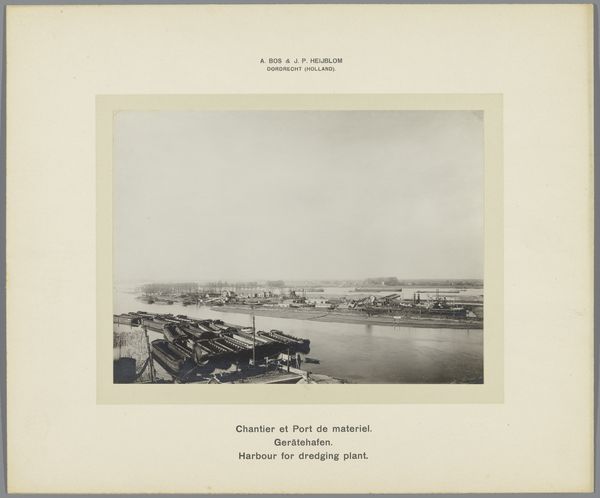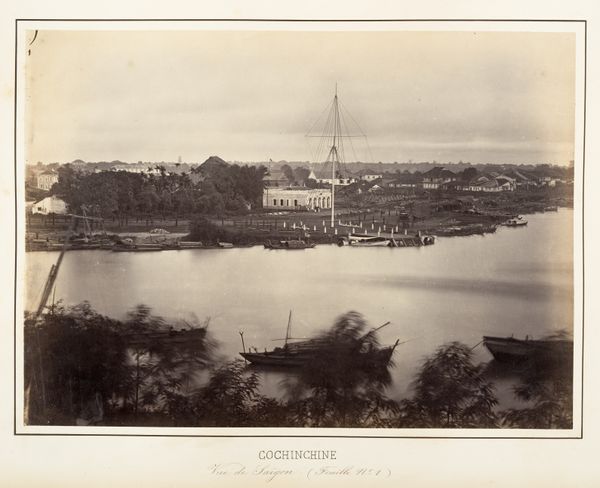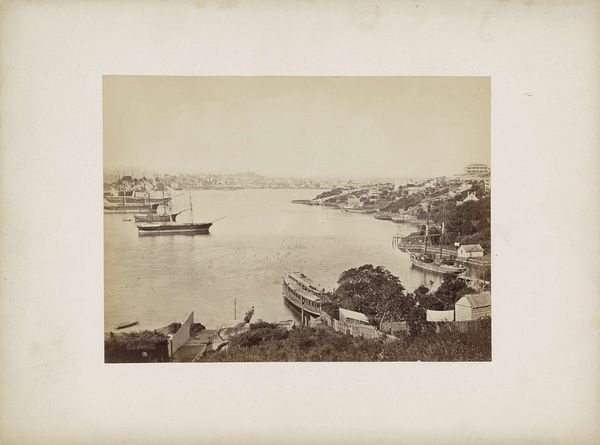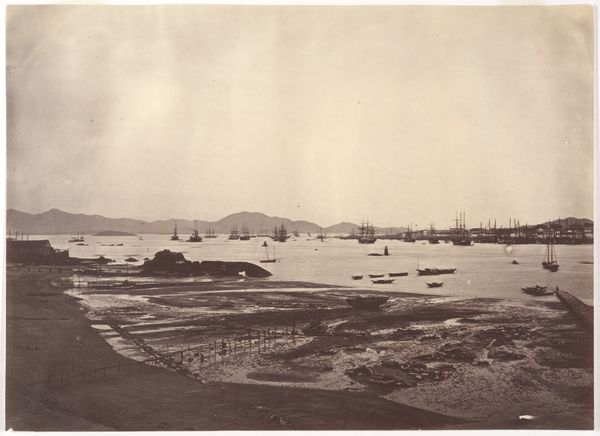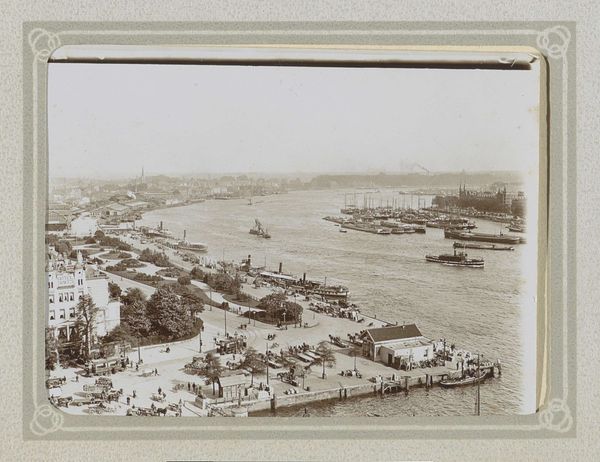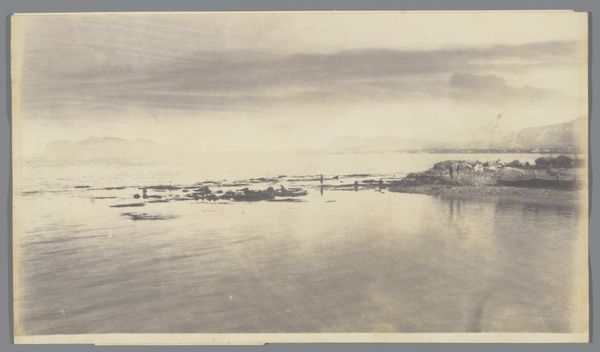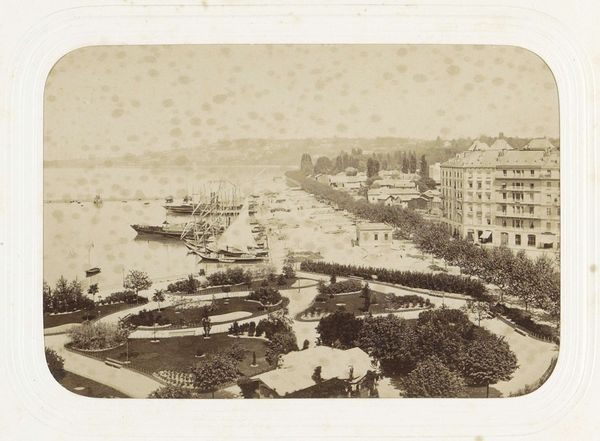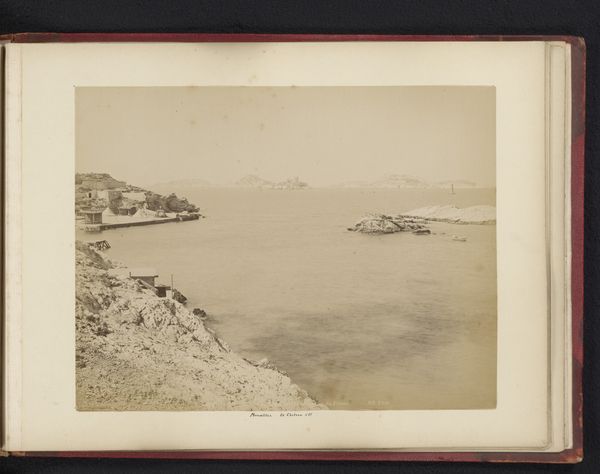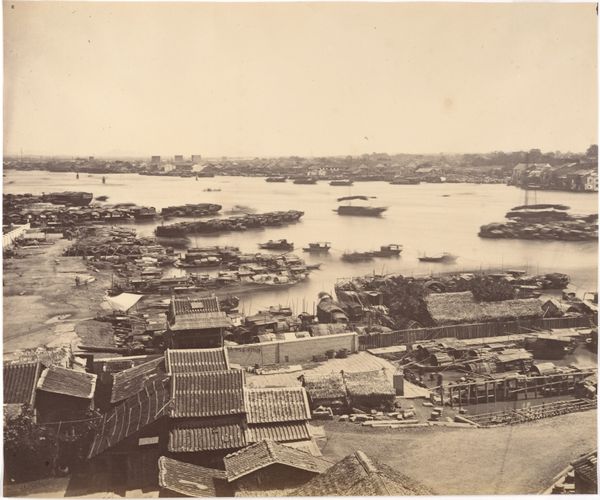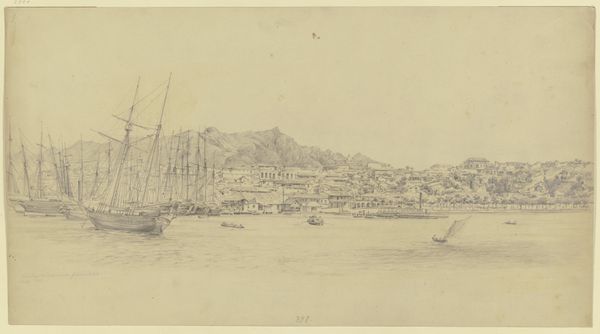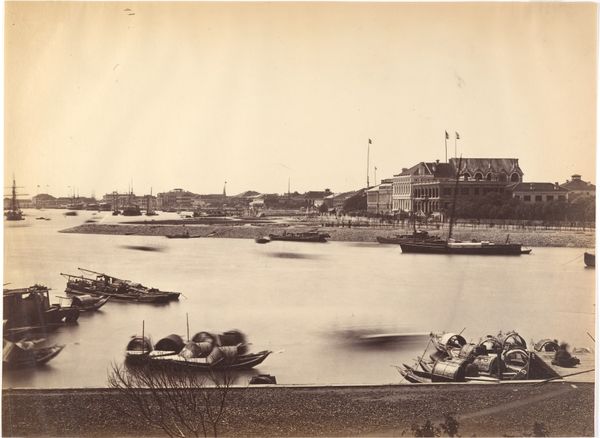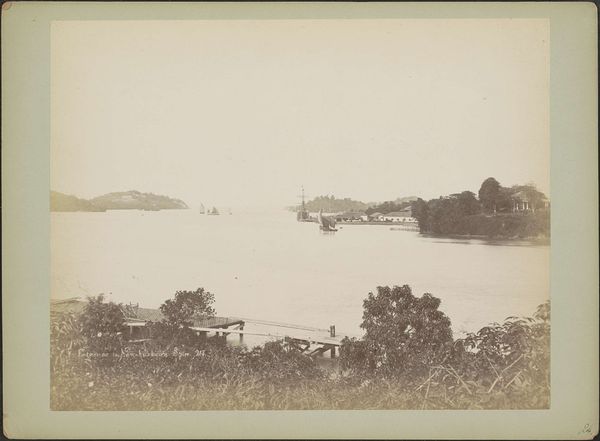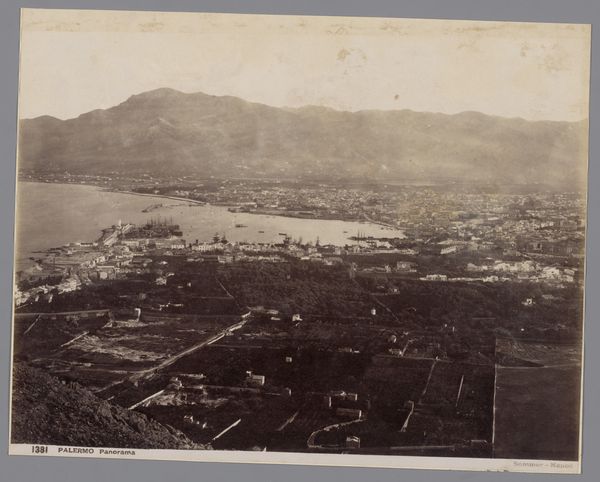
photography
#
ship
#
pictorialism
#
landscape
#
photography
#
orientalism
#
cityscape
Dimensions: height 105 mm, width 152 mm
Copyright: Rijks Museum: Open Domain
Editor: So, here we have Hendrik Dunlop’s photograph, "Fuzhou: gezicht over de stad, de brug en de rivier," taken sometime between 1890 and 1895. It's a fascinating cityscape, very serene despite all the detail. What really stands out to you in this work? Curator: The way Dunlop frames Fuzhou is quite telling. Consider the symbolic weight of bridges in art—they often represent connections, transitions. But here, the bridge, while physically linking parts of the city, also subtly suggests a passage between cultures, observed through a Western lens influenced by Orientalism. What do you notice about the light? Editor: It's quite soft and muted, almost dreamlike. I guess it enhances that serene feel I mentioned. Curator: Precisely! Light often carries profound meaning. Here, that soft light almost feels like a veil, perhaps unintentionally romanticizing a faraway land, creating an idyllic, almost timeless scene. Does the presence of so many ships strike you in any particular way? Editor: Well, it speaks to trade and the river as a life source, a symbol of movement and commerce, surely. But I hadn't thought about how that tied into the rest. Curator: Consider then, how ships appear throughout history as emblems of exploration, colonialism, even cultural exchange—sometimes forced. Dunlop's choice to highlight these elements alongside the architecture places the scene within a broader narrative. Perhaps there is an emphasis on cultural confluence through commerce. It seems peaceful on the surface but… Editor: But these symbols have more complicated histories that change how we read the photograph. I will never see bridges the same again. Thanks. Curator: Indeed. Recognizing the layered meanings embedded in images—the history and context, transforms our experience.
Comments
No comments
Be the first to comment and join the conversation on the ultimate creative platform.
